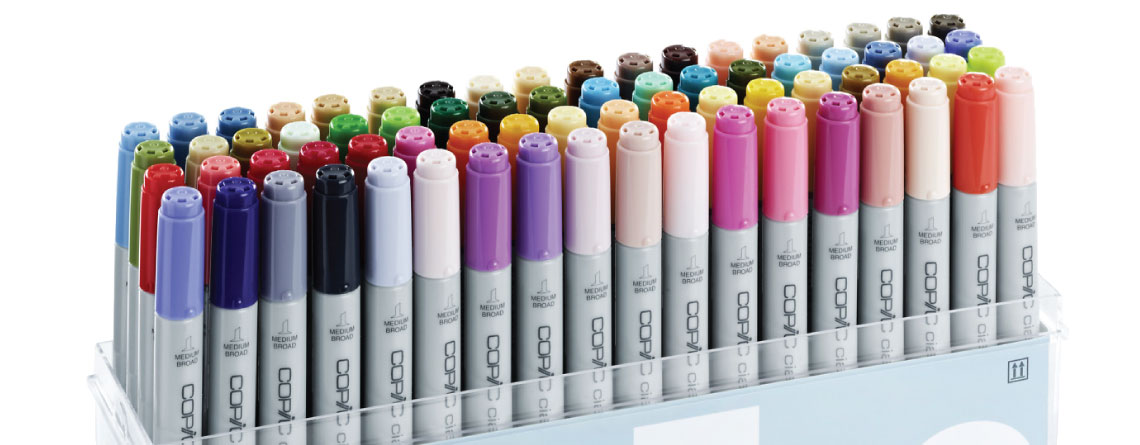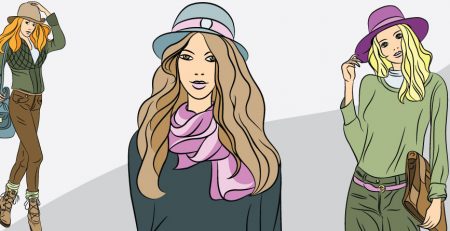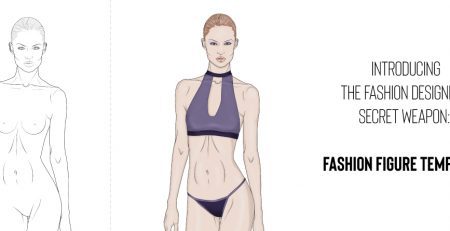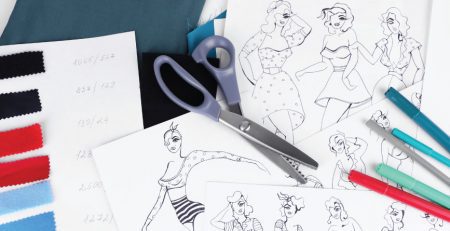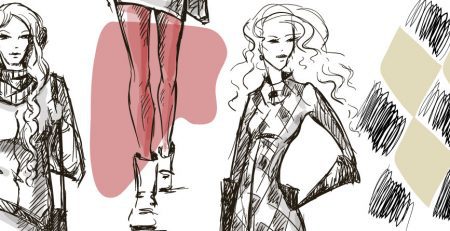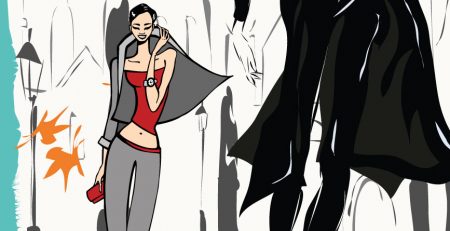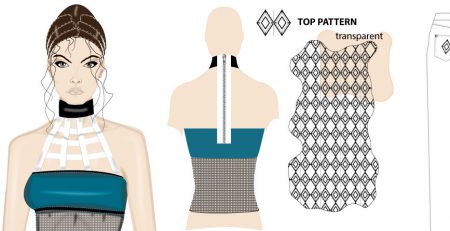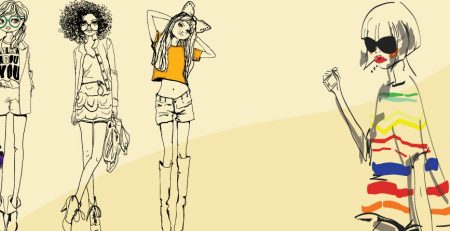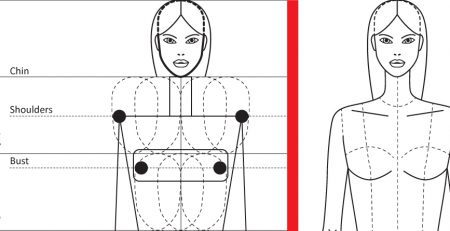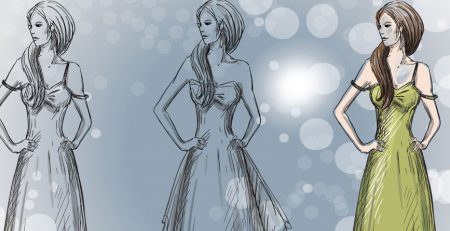The raw material of fashion design is fabric or textiles, terms that denote a multiplicity of beautiful yarns, fibers, colors, textures, smart synthetics, knits, organic cottons, and so on. Once your drawing accurately depicts the silhouette of your fashion design, rendering is the means by which you can convey information about the exciting fabric choices that help to make an outfit unique.
Taking the time to accurately match color, capture texture, convey light and shadow, and display drape and important design details will produce a rendered illustration that is effective and visually compelling. The tools you use for this important task are key.
Markers are the most versatile and effective media for rendering fashion illustrations. They are clean, portable, and efficient to use, and therefore are the choice for most designers at work. Quality brand markers dispense an alcoholbased ink that is wonderfully intense but nontoxic. You can render anything with markers, but they work especially well when combined with other media. They can even go over printer toner without smudging, or on top of gouache to add shadow or other details. The main choices you need to make are what brand, or brands, and what colors you want to purchase. Note: The good marker brands are all compatible with each other.
Marker Product Lines
If you like markers, the choice of amazing and versatile products is increasing all the time. Copic, Tria, and Prismacolor are all good, nontoxic brands. I was using Tria.
Copic Refills and Markers
The Copic system from Japan is especially user-friendly because it is well labeled by name and number (which indicates saturation), and is organized in “color families.” There are 310 great colors, including multiple skin tones of varying shades, and four different “systems” of grays. All the colors come in refillable markers and color refills, and the refills do not leak if the cap is on tight. The caps on both refills and markers indicate the color, and a gray line tells you which nib is their wonderful brush tip, which is all I ever use. A variety of replacable tips is available. The markers are comfortable to hold and do not deteriorate. Though not inexpensive, they cost less than Tria, which is a comparable brand.
Tria Markers
This system is also good with many features similar to Copic, including about 300 colors, refillable markers and color refills, and additional brush tips. They also have multiple tips in each marker, one hidden under the other. On the negative side, their prices are the highest of any marker line, their refills can leak even when the tops are on correctly, the marker is not as easy to hold and use as the plastic Copic marker, and the colors are categorized only by numbers.
Prismacolor Markers
These markers win in terms of price. They have good usable colors and even a handy set that is all skin tones. They are less expensive by several dollars, and they can be quite long-lasting. The downside is they have no refills and no brush or replacable tips. The colors are categorized by name only.
White Gouache
Though not a marker product, white gouache is our “magic bullet” in marker rendering. Adding gouache highlights to almost any drawing or rendering will add dimension and drama. The only disadvantages are that gouache is fairly expensive and will dry up over time. You also need to buy several decent very small brushes in sizes 00 and/or 000.
Here is the image of my Fashion Design. I draw this design using Tria Markers and colored pencils:


